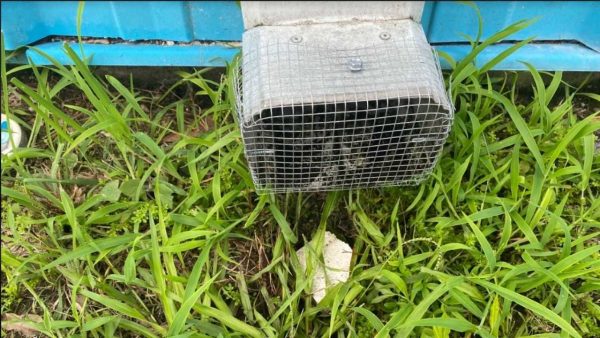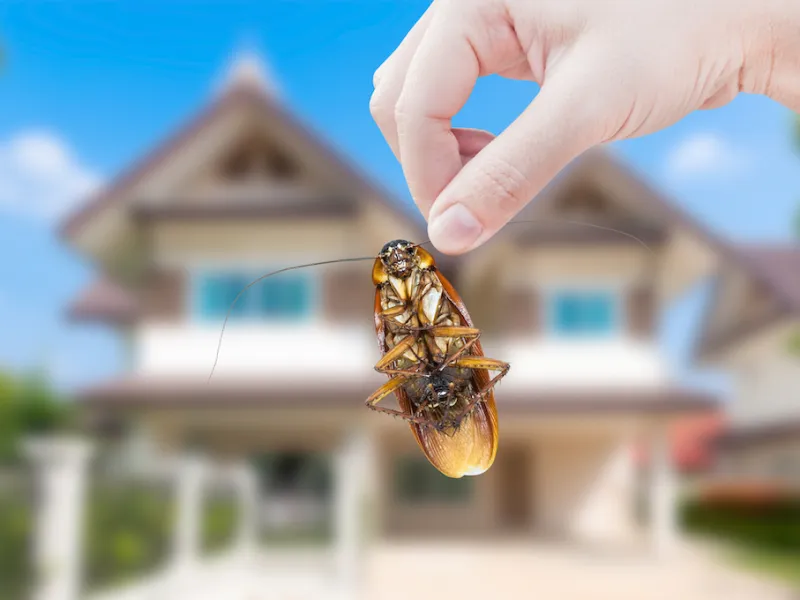Effective Termite Treatment Port Charlotte to Protect Your House
Learn Concerning the Most Recent Advancements in Bug Control and Exactly How to Carry Out Reliable Treatment Solutions
In recent times, the area of pest control has actually observed substantial improvements, driven by the need for effective and lasting treatment remedies. Ingenious strategies such as Integrated Pest Monitoring (IPM) combine green practices with sophisticated modern technology, boosting both effectiveness and environmental duty. The combination of clever technologies and DIY approaches has actually empowered people to deal with pest concerns a lot more effectively. As we explore these advancements, it comes to be necessary to recognize just how ideal to execute these strategies in numerous setups to accomplish optimal results. The implications for parasite administration practices can be transformative.
Eco-Friendly Insect Control Options
Over the last few years, the demand for green bug control choices has surged as businesses and house owners alike look for lasting alternatives to standard chemical treatments. This change is driven by growing environmental recognition and a desire to minimize the wellness threats related to synthetic chemicals.

Environmentally friendly bug control techniques encompass an array of approaches that focus on the use of natural compounds and practices. Integrated Pest Administration (IPM) is one such approach, integrating biological, cultural, and mechanical strategies to handle parasite populations while lowering dependence on chemicals (Wildlife removal services). This alternative method stresses avoidance through habitat control and the introduction of all-natural killers, thus promoting a balanced ecosystem
One more preferred option is the usage of organic chemicals originated from plants, which have a tendency to be less hazardous to non-target organisms. Products like neem oil and diatomaceous planet have gotten traction for their efficiency in regulating insects while posturing minimal threats to human health and wellness and the atmosphere.
In addition, exclusion techniques, such as securing access factors and maintaining cleanliness, play a crucial role in green bug management. By taking on these sustainable techniques, services and people can properly handle parasites while advertising a healthier world for future generations.
Smart Innovation in Parasite Administration
Development is improving the landscape of bug administration, with clever technology becoming an essential pressure in improving efficiency and efficiency - Wildlife removal services. The combination of Net of Things (IoT) devices, man-made knowledge (AI), and information analytics is revolutionizing how bug control professionals approach infestations
Smart traps geared up with sensors can spot bug task in real-time, sending prompt notifies to drivers. This permits timely reactions, lessening damage and decreasing the demand for extensive treatments. Additionally, AI algorithms examine historical information to forecast parasite actions, allowing aggressive treatments based on environmental conditions and problem patterns.
Drones and automatic lorries are additionally playing a significant duty in insect administration, providing airborne analyses of big locations, identifying hotspots, and also distributing targeted treatments. These modern technologies not just simplify procedures however also boost safety by limiting human exposure to potentially dangerous chemicals.
In addition, mobile applications empower customers to keep an eye on parasite activity and gain access to professional guidance, cultivating a joint strategy to pest administration. In general, the fostering of smart technology is setting a new standard in insect control, highlighting data-driven decisions and lasting techniques that eventually profit both specialists and house owners alike.
Integrated Parasite Management Methods
Integrated Pest Monitoring (IPM) utilizes an all natural method to pest control, incorporating numerous techniques to efficiently handle parasite populations while decreasing risks to human wellness and the setting. IPM revolves around comprehending the pest life cycle, their natural enemies, and the ecosystem in which they grow.
Among the fundamental elements of IPM is checking pest populaces through normal assessments and data collection. This enables the recognition of bug thresholds, determining when treatment is essential. Cultural techniques, such as crop cleanliness, turning, and environment control, are important in decreasing bug prevalence and promoting plant wellness.
Mechanical controls, consisting of barriers and catches, are additionally important in IPM. These methods can literally get rid of or prevent bugs without the use of chemicals. When needed, the judicious application of chemical controls is utilized, focusing on targeted therapies that reduce environmental impact.
Education and learning and partnership amongst stakeholders, consisting of farmers, pest control Visit Website experts, and the community, are crucial for the effective application of IPM methods. By prioritizing sustainable methods, IPM not just addresses pest concerns but also cultivates a much healthier ecological community.
Biological Control Methods
Numerous organic control methods are progressively acknowledged for their performance in managing bug populaces while promoting ecological balance. These approaches harness natural predators, bloodsuckers, and virus to reduce pest numbers without depending on artificial chemicals. For circumstances, the introduction of ladybugs can efficiently regulate aphid populations, while nematodes target soil-dwelling bug larvae.
Furthermore, the use of microbial pesticides, such as Bacillus thuringiensis (Bt), provides an ecologically pleasant option for handling caterpillar parasites. These items specifically target pest types, lessening harm to beneficial bugs and pollinators. Conservation biological control emphasizes enhancing environments for all-natural opponents, such as birds and helpful insects, thus urging their visibility in agricultural systems.
Research proceeds to disclose innovative strategies within this area, such as the usage of pheromones to disrupt pest breeding patterns or the advancement of biocontrol representatives via hereditary engineering. Applying these methods can result in lasting pest management practices that alleviate the dependence on chemical treatments, ultimately fostering much healthier my website ecological communities. As awareness of these techniques grows, they are coming to be indispensable parts of integrated pest administration (IPM) approaches, offering a balance in between efficient insect control and environmental stewardship.
Do It Yourself Parasite Control Solutions
As home owners seek reliable ways to deal with bug concerns, do it yourself parasite control remedies have obtained appeal for their access and cost-effectiveness. These methods equip people to attend to infestations making use of readily available materials and strategies, often without the requirement for specialist intervention.

Additionally, maintaining proper sanitation and routine assessments can stop insect access and nesting (Wildlife removal services). Simple practices, such as securing fractures, removing food sources, and decluttering, can significantly decrease insect populations. Traps, both homemade and commercially offered, can likewise provide reliable solutions for monitoring and regulating certain insects like rodents or pests

Final Thought
The combination of green insect control choices, clever modern technology, and ingenious management approaches presents a detailed method to reliable pest management. By accepting Integrated Pest Administration (IPM) and utilizing biological control their explanation techniques, together with DIY options, responsible and sustainable insect control can be achieved.
Environment-friendly parasite control methods encompass an array of approaches that focus on the usage of natural materials and practices. Integrated Insect Management (IPM) is one such strategy, incorporating organic, cultural, and mechanical strategies to handle pest populations while reducing reliance on chemicals. As recognition of these strategies grows, they are coming to be important elements of integrated bug administration (IPM) methods, using a balance between reliable insect control and ecological stewardship.
The combination of environmentally friendly insect control options, wise innovation, and ingenious monitoring methods offers a detailed approach to reliable parasite management. By welcoming Integrated Insect Management (IPM) and utilizing organic control techniques, along with Do it yourself solutions, sustainable and liable insect control can be accomplished.